
Issue #69: Friday 12 July, 2024
Some cracking-good reads this time around!
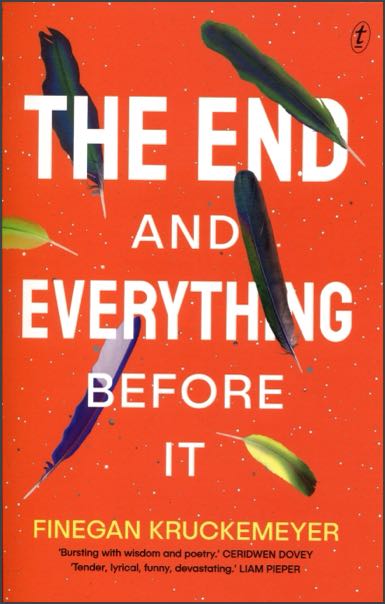
In sympathy with the title of this book, let me begin at the end: this is without question the best book I have read this year, and perhaps for the last few years. It was simply a joy to read.
Finnegan Kruckemeyer was born in Ireland, but migrated to Australia when he was eight and now lives in Adelaide. He is an internationally-award-winning playwright, with more than one hundred plays performed around the world, many of them written for young audiences. The End and Everything Before It is his first novel, published by Text Publishing here in Melbourne.
What is it about? Well, that’s easy enough. It’s about death (“The End”) and life (“Everything Before It”): about grief and loss, cruelty and love. About what it means to live a good life. About redemption. More than anything, you’ll find out at the very end, it’s about the miraculous strength of a mother’s love for a child.
There’s a mythic feel to the novel, particularly at the start: a heightened sense of unreality, a sense that you are being recounted a legend, a story for the ages. In many ways it reminds me in a very positive way of the writing of fellow-Australian Robbie Arnott, particularly the latter’s novels Flames and The Rain Heron.
The End and Everything Before It is not, however, an easy book to describe in any detail without giving too much away, particularly the very clever underlying concept. So let me just set the scene a little.
We’re introduced in the first chapter to a teenage girl, Emma “the Greek”; though as she tells us, she is not Greek. As the book opens, she is at sea, adrift in a lifeboat with her father and three brothers. They have apparently escaped from their sinking trawler, the temperature is icy, and their survival is in doubt.
In the next chapter, we meet a man called Isaac, who has been in prison for some years after being convicted of murder. He has just been, unexpectedly, set free and told that he has inherited many acres of land, on the other side of a forest from the bare hill on which the prison stands. The inheritance is from a great-uncle whom Isaac barely knew. On this land, on this unexpected gift, Isaac builds a town with the assistance of the neighbouring farmers. Almost the entirety of the story is set in this small town, which is on the shore of an ocean. Unsurprisingly, this town is where Emma the Greek eventually arrives after a long and hazardous journey.
Throughout the book we are introduced to a variety of characters as the years and generations pass. At one point we may see these people from an initial third-person point of view, and then have a first-person point of view of the same person. The scenes of the story are not all given to us in a chronological order; we range back and forth in time as their stories are told. All this makes up a fascinating kaleidoscope of a place and community. Their stories are mostly happy ones, filled with love and joy, though as the years pass there is naturally loss and grief. Accepting and understanding grief is indeed an important theme of the book; accepting death as a welcome release after a well-lived life, a redemptive life.
I liked this so much that no sooner had I finished reading it, than I turned around and immediately started again—something I do quite rarely—and the book well-repays that close attention, though of course you don’t need to do that to enjoy it thoroughly on the first read. Personally I am glad that I read the book twice because on the second reading I could understand better the bones of the book: how intricately and cleverly constructed it is; how the pieces work; how all the characters are related; how the little mysteries add up and foreshadow the revelation at the end of the book which ties it all together.
Full of wisdom, poetry, humour, sadness and magic, The End and Everything Before It is a real pleasure to read. Highly recommended. I’ll be very surprised and disappointed if it doesn’t get nominated for the Miles Franklin and other awards.
By crikey, I’d like to see some of his plays, but I also hope Kruckemeyer keeps on writing novels.
Many thanks to Text Publishing for sending me a review copy of this book.
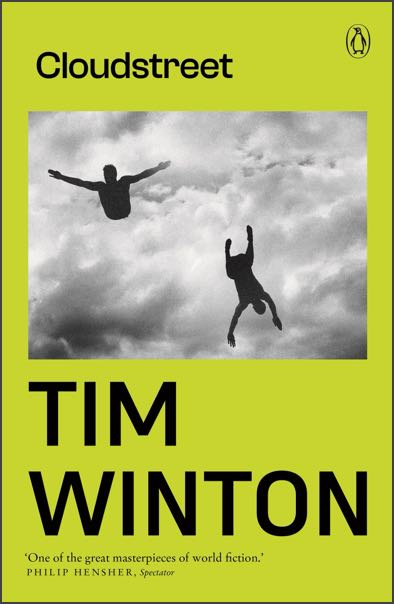
It’s rather surprising that it took me so long to start on this novel, published in 1991 and now regarded as a great classic of Australian fiction. My wife recommended it to me many years ago, but for whatever reason it wasn’t until I found an audiobook of it through my library system a couple of months ago that I started on it.
I started listening to it and was enjoying it a great deal, but it’s quite a long book (nearly 13 hours), and these days I have very limited time to listen, because I largely do that when I’m travelling on public transport, driving or walking: all of which have been constrained for me lately. So it was taking me far too long to get through it in audio format. Which is why I found a print copy instead and continued with that, from around the two-thirds point of the book. I don’t know what those strange folk who don’t consider listening to an audiobook to be “real” reading will make of that!
It’s hard to know what to say about Cloudstreet, which is indeed a great piece of Australian literature, and I’m finding it very hard to do it justice.
A simple description would say that it is the story of two families in Western Australia which both, in different ways, suffer a tragedy in the closing years of the Second World War. Both families end up moving from rural areas of Western Australia to a suburb of the capital city of Perth and begin living together in the same rambling old house in Cloud Street, one family as landlords and the other as their tenants. We follow their stories over a period of twenty years, from the end of the war into the 1960s, as the children grow up and start families of their own.
But that’s an extremely bald summary. What it is really is a sprawling, raucous, often very funny, occasionally tragic and at times mystical epic family story. The major characters are rich and interesting and their stories are deeply engaging. And one “character” above all is fascinating: the house itself, which seems to have moods, loves and dislikes of its own, as well as a couple of ghosts.
The first family is the Pickles, led by Sam Pickles, a compulsive gambler and frequent loser, who indeed loses the fingers on his right hand in an accident almost at the start of the novel. But fortune favours him for once when he inherits the house in Perth after the death of a friend, and the family moves there from Margaret River. Sam’s wife Dolly is very good-looking, promiscuous and frequently drunk. Their daughter Rose, perhaps 10 or 11 years old as the book opens, often has to go to a local pub and try to fetch her mother home.
The second family, who end up becoming tenants at the house in Cloud Street and turning part of it into a successful grocery shop (eventually called by the locals just “Cloudstreet”), are the Lambs. Lester and Oriel Lamb start out as deeply religious people, but after their son “Fish” suffers brain damage from a near-drowning when he is ten years old, they turn against the Church and become much more worldly. Their eldest son, “Quick”, struggles with the aftermath of the drowning incident, and a further event in which he witnesses a school friend killed by a train.
None of that sounds very cheery, does it? But in fact the love of all of these people for each other, their general fatalistic cheerfulness, their humour, and their zest for life in all its “blooming, buzzing confusion” stands out above the miseries they sometimes endure. And there are some delightful touches of fantasy within the story.
As a picture of working-class Australian life in the post-War period, Cloudstreet is wonderful. And it’s tremendously entertaining to read. I am really glad to have finally read the book.
Highly recommended.
I should say about the audiobook version that the narration by Peter Hosking is excellent, particularly considering the range of different voices he has to perform.
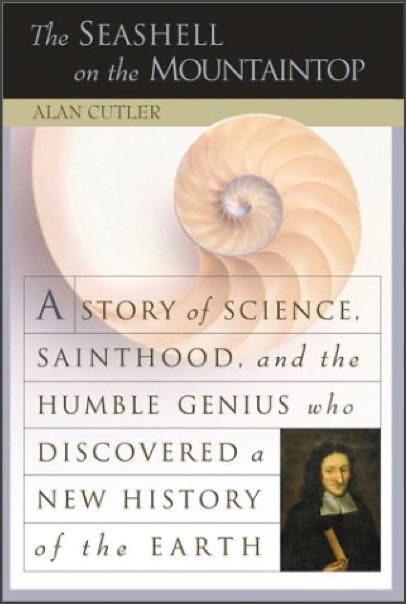
The subtitle of this book really says it all: A Story of Science, Sainthood, and the Humble Genius who Discovered a New History of the Earth. I have always been really interested in the history of science and technology, so when I spotted it in a second-hand bookstore in Bendigo I grabbed it immediately.
Interestingly, this book, focusing on a particular individual in the 1600s, was not written by a professional historian or biographer, but by a geologist. Alan Cutler tells us he started out to write simply about fossils and geological strata, but in following up the history of our knowledge of these things, he was led eventually to a relatively unknown individual who was the first to set out something like our modern understanding of the history of the Earth.
That individual was a Danish man, born in Copenhagen in 1638. His name was Niels Stensen, Latinised as Nicholai Stenonis, later further modified and shortened to Nicholaus Steno. In his early 20s he came to fame not as a proto-geologist, but as an expert in dissection, both of animals and humans, and as someone who championed actual investigation and experiment over simply accepting what ancient authorities had said.
He came to his geological interests after dissecting a huge shark caught off the coast of Tuscany. Steno was struck by the similarity of the shark’s teeth with strange “tongue stones” sometimes uncovered in the mountains of Italy, to where he had migrated. Pursuing this interest, he pondered the fact that shells were frequently also found within stone formations high in the mountains. The orthodoxy of the time, considering as absurd the suggestion that such mountains could ever been submerged, was that such shell-like shapes grew directly in the rock, part of the ongoing work of Creation. Overthrowing this orthodoxy became Steno’s mission, and led him to believe that the geological strata sometimes exposed to view were layers laid down by sedimentation, one after the other, over immense periods of time. The shells on the mountaintop were real shells, once inhabited by living sea creatures. Obviously this theory made the dogma (in Protestant teachings, at least) that the Earth was only 6,000 years old a nonsense.
How Steno’s ideas were disseminated across Europe, how they were disputed and opposed, and how they eventually came to become accepted well after his death, make up a substantial part of the book.
The author makes all of this an extremely interesting narrative, following the ups and downs of Steno’s life, from his Protestant beginnings and dedication to science, to his ultimate conversion to Catholicism, turning away from his scientific interests, being appointed as a priest, eventually becoming a bishop and after his death a candidate for canonisation as a saint.
This book was published in 2003, but being history of course very litle of it has dated. It’s very well written and engaging. It’s clearly been thoroughly researched, and there is a long list of sources at the end of the book. If you can find a copy I do recommend it to you.
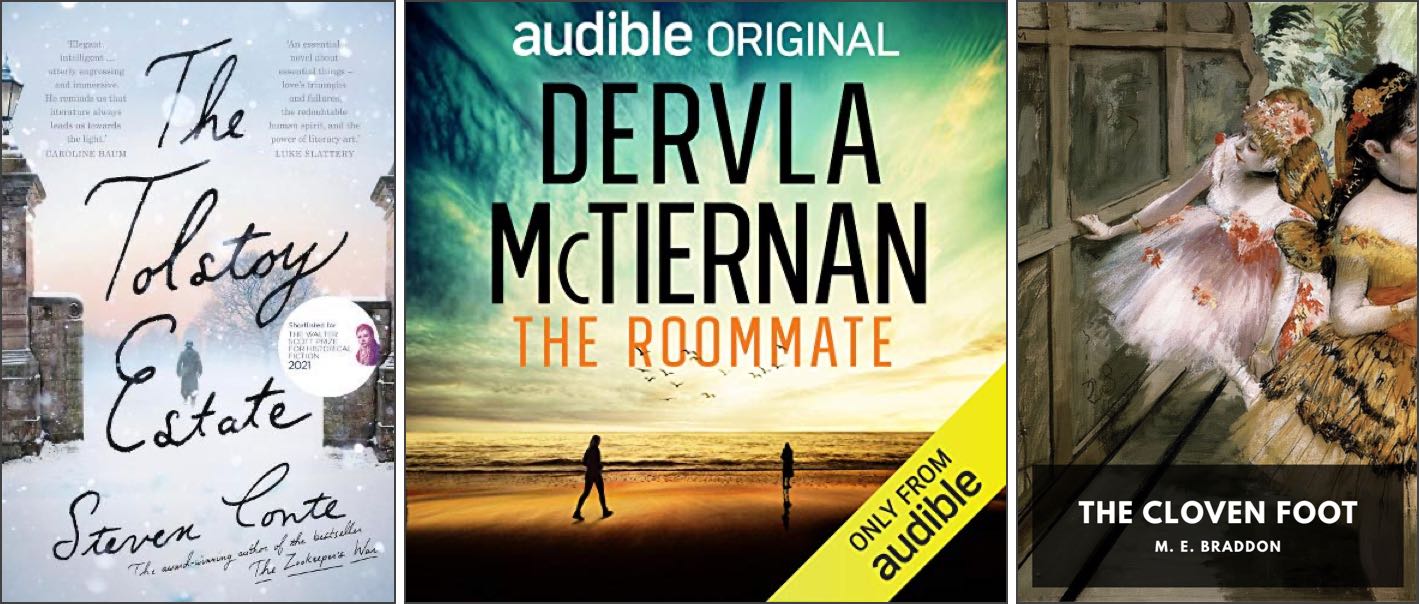
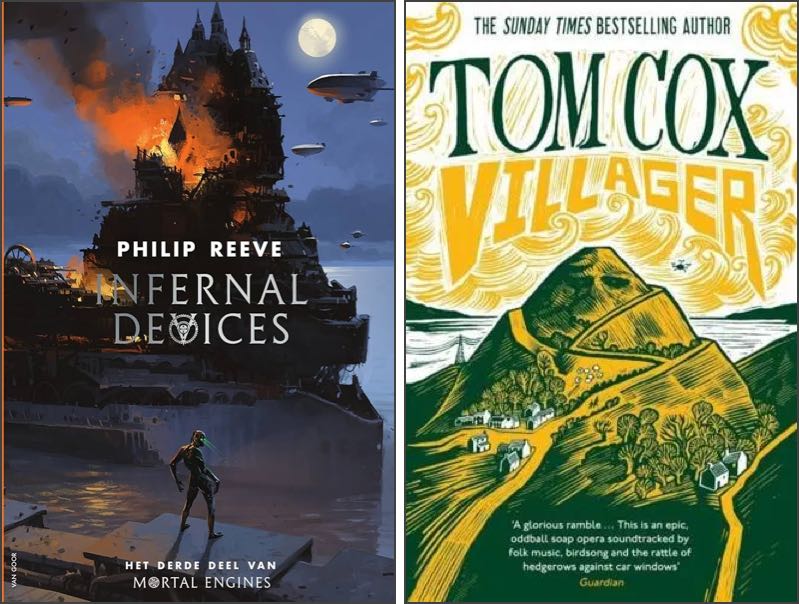
We’ve been watching the third season of The Bear, which is excellent, but I don’t think I have anything original to add to what others have been saying about it.
Comment on Issue 68
29 June 2024
Rob Gerrand
---
You can certainly identify logical flaws in the novel and show, but you have to have that "wilful suspension of disbelief", I think. The book is clearer about why Daniella chooses a particular Jason 1, and why she refuses the idea of a lottery. The one she chooses is the only one who came up with the idea of getting arrested, so Daniella will get a call to bail him out, and who then manages to prove his case to her.
Myself, I wonder about the instances of the huge "Box" which turns up in various timelines, presumably at the moment that the door is opened from inside. You would think the sudden appearance of something like this would attract more attention, particularly as it seems to remain in that timeline forever, or at least until someone gets back in and closes the door. Still, it's considerably more logical than most Doctor Who episodes!
It’s certainly interesting to speculate on what happens to the crowd of Jason 1s once Daniella and Charlie have left that timeline forever. Maybe there will be a second season?
—David
If you’d like to make a modest contribution to my efforts in this newsletter, I’d love it if you would buy me a coffee.
Want to comment? Please send an email to:

© Copyright 2024 by David R. Grigg
and licensed under Creative Commons License CC BY-ND 4.0.
I too have watched Dark Matter. and generally I agree with your take. However, one thing bothers me. A large number of Jasons turn up at Jason1’s world. Why didn’t a large number of Jason2s also turn up? Also, each of the multiple Jasons that did turn up are based on Jason1, that is the “good” Jason. Jason2 seems to have no compunction in killing his earlier self. And all the versions based on Jason1 having equal motivation to regain their stolen family, should have the same appeal to their family. Is it simply first in best dressed?
I wonder what the police woman will do when she finds all the Jasons?